Renovated pasture enables grazing and environmental research to support beef sector, environment
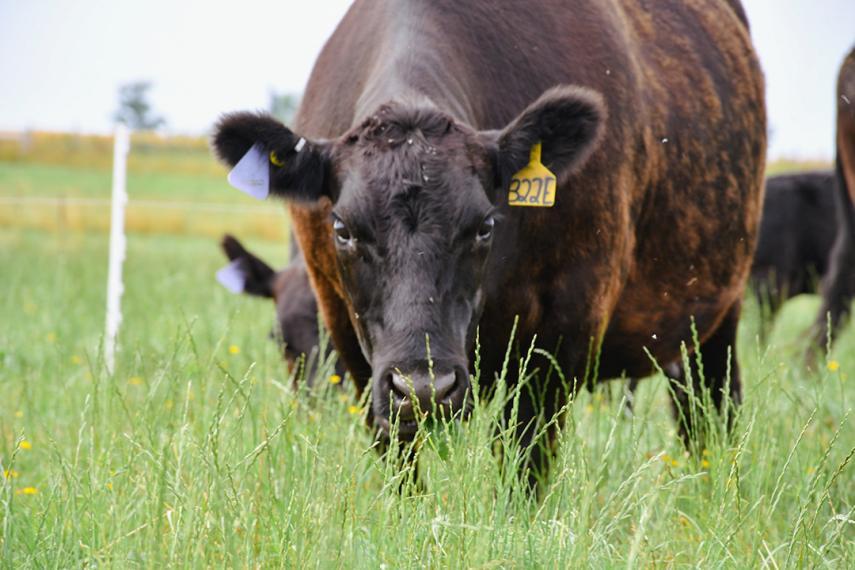
Cattle are not the only ones enjoying the benefits of the Ontario Beef Research Centre’s greener pastures. That’s because the renewed and expanded 121-hectare perennial pastures just outside Elora provide more than a bovine buffet—their unique design makes them living laboratories, enabling research that aims to help beef producers lower the cost of production, safeguard the environment and increase profitability.
The pasture upgrades were part of the new Ontario Beef Research Centre completed in 2019. The state-of-the-art research centre was supported by a collaboration among the Agricultural Research Institute of Ontario, the Government of Ontario, the Ontario beef industry and the University of Guelph. The renovated pasture, completed in 2020, added more than 60 hectares to the centre’s existing pasture.
Two U of G studies based around these unique grounds are now poised to support sustainable beef production. The structure of the pastures—portions of which are divided into one-acre (0.4-hectare) paddocks—allows researchers to compare and evaluate current and innovative practices to help provide evidence-based recommendations to producers. The goal is to identify sustainable pasture management strategies that benefit animals, plants and the environment while helping the producer’s bottom line.
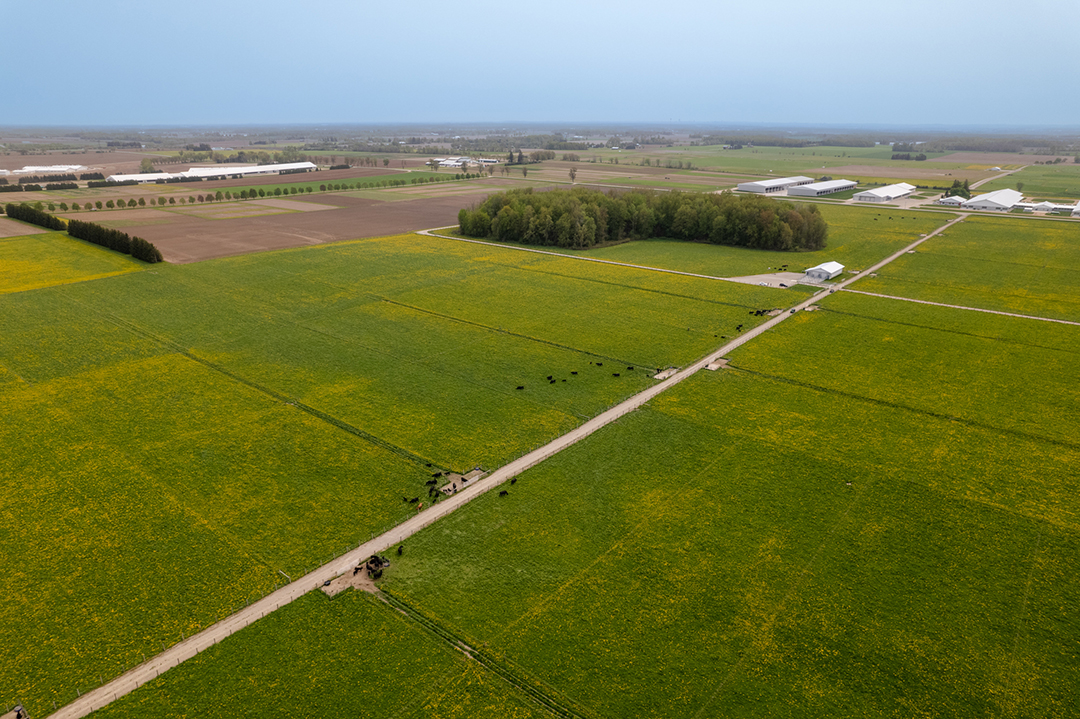
The pasture at the Ontario Beef Research Centre provides the space researchers need to study management strategies to enhance sustainability, including forage blends, grazing strategies and interventions to reduce greenhouse gases.
Supporting sustainable beef production through holistic pasture management
U of G researchers are examining five pasture management strategies and their impact on plant and soil health as well as animal productivity. Initiated by retired professor Dr. Ira Mandell from the Department of Animal Biosciences and now led by Dr. Eric Lyons, a professor in the Department of Plant Agriculture, the team is looking at how management strategies affect the cost of production for beef producers and environmental concerns for society, such as reducing greenhouse gas production through carbon sequestration.
“Many Ontario beef producers use continuous grazing or set stocking [the practice of grazing cattle in a single paddock for an extended period] when pasturing cattle without really knowing the environmental footprint this grazing strategy leaves behind or the potential loss in pasture productivity and animal performance,” explains Lyons.
With access to 47 hectares of pasture and 117 cow-calf pairs in Elora, the team is assessing the impact of five pasture management strategies. These strategies range from continuous grazing or set stocking, which brings producer benefits such as reduced labour costs, to strip grazing, which in comparison entails increased labour costs due to daily, manual movement of cattle between strips or small sections of pasture for rapid grazing. The team aims to analyze the impact of each strategy on plant, soil and animal health.
Their findings will allow beef producers to make informed decisions about adopting appropriate pasture management strategies that can dramatically increase the amount of high-quality nutrients (energy, protein, minerals) for grazing cattle to optimize animal performance and increase returns on investment.
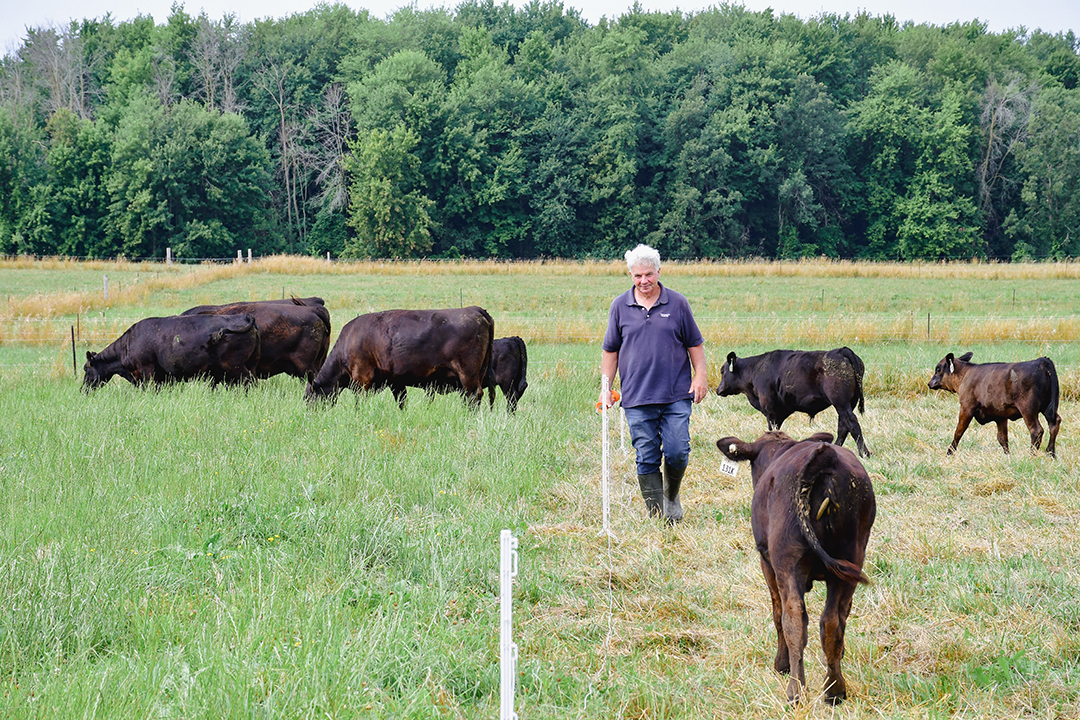
Staff member Bob Hasson moves cow-calf pairs in the strip-grazing pasture plots.
Based on study findings, the team will develop a comprehensive evaluation of how each strategy impacts soil health and the microbiome, carbon sequestration, pasture quality, animal performance and cost of production. A comprehensive pasture systems approach will also make beef producers better environmental stewards of their land.
Pasture design facilitates grazing research to increase profitability
U of G researcher Dr. Kim Schneider, a professor in the Department of Plant Agriculture, is examining the effects of several types of annual forages in a rotational grazing system. In this system, each paddock is intensively grazed for a short period, then allowed to rest before being grazed again, all to see whether the grazing season can be extended. Her study takes place on the Ontario Beef Research Centre pasture, with a grazing season from May to October, to generate a robust data set: six eight-acre fields are divided into one-acre paddocks, allowing for four different forage mixtures per field to be replicated three times.
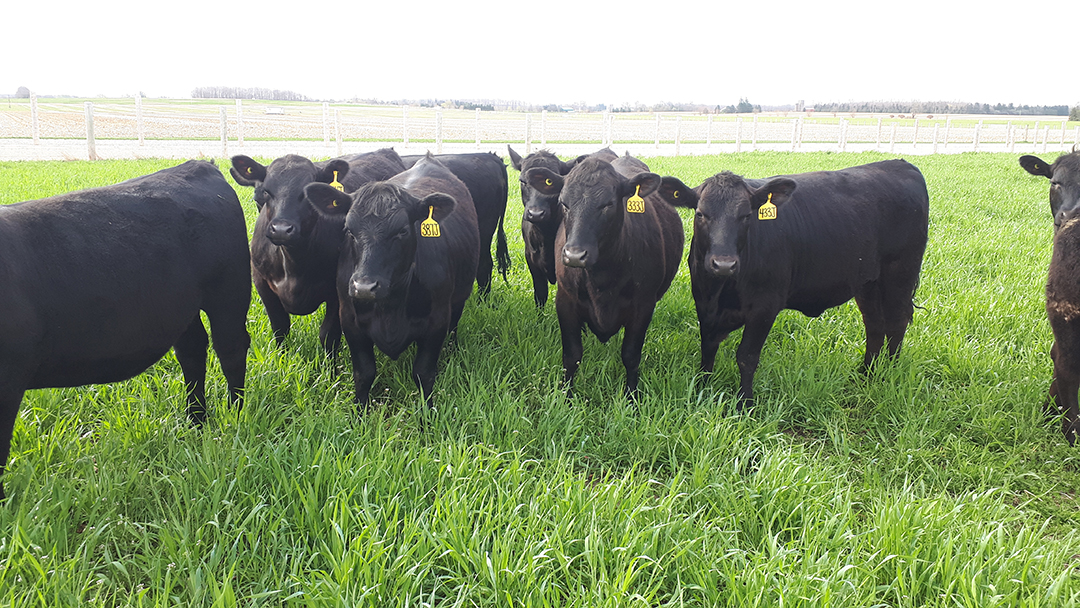
Herd on pasture in Elora grazing fall rye in May.
“Increasing the quality of and time spent on pasture for cattle will increase profitability for beef producers by lowering feed costs, which are the number one cost for most ruminant livestock production systems,” explains Schneider. “Further, improving pasture utilization has been shown to reduce the land base required to raise livestock, minimizing the environmental footprint.” Dr. Schneider uses the perennial pasture to calibrate a tool called the rising plate meter for Ontario pastures. The tool, which estimates pasture biomass, will help create a roadmap for Ontario-specific pasture performance, ultimately driving livestock output, increasing farm profits and effectively utilizing the land.
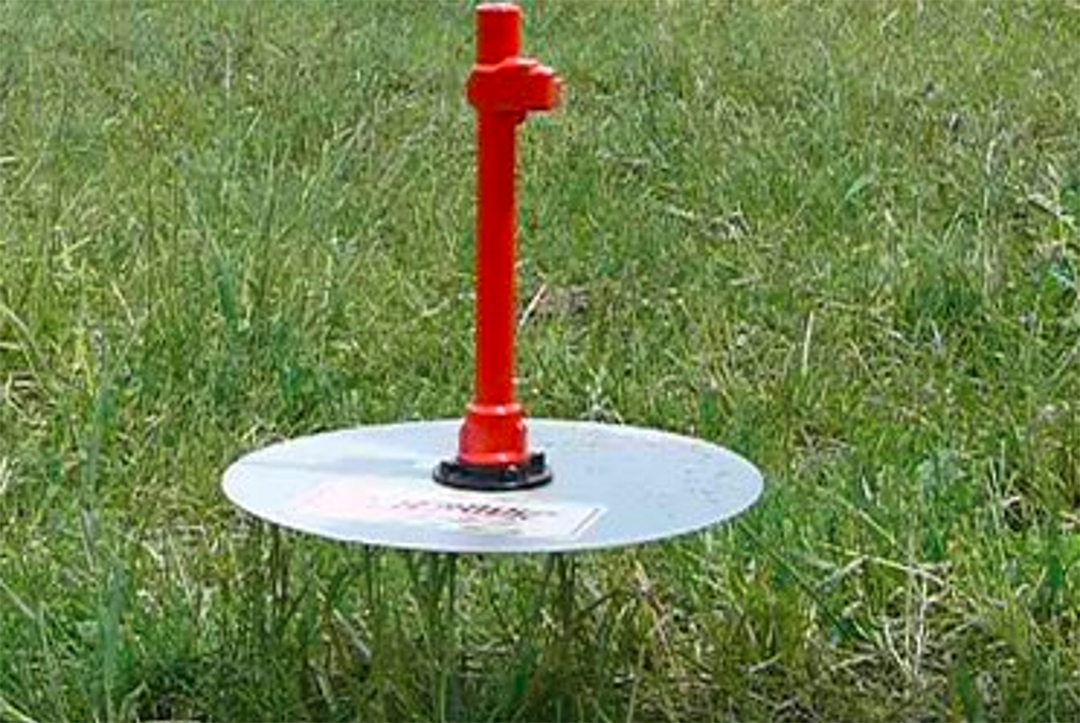
Rising plate meter tool to determine pasture biomass.
Helping farmers make informed decisions
Pasture and forage research results generated at the Ontario Beef Research Centre are shared with farmers via field days, conferences, publications and events and through the U of G initiative Beef@Guelph. The data helps beef producers make on-farm decisions about adopting potential pasture management strategies to maximize animal performance, increase returns and improve plant and soil health, while giving cows access to greener pastures.
Lyons and Schneider will conclude their pasture research projects in 2024 and 2026, respectively. Their teams look forward to sharing their results with the beef community to further innovate the sector.
Schneider's research is funded by the Ontario Agri-Food Innovation Alliance, a collaboration between the Government of Ontario and the University of Guelph.
Funding for the research led by Mandell and Lyons is funded by Beef Farmers of Ontario, the Natural Sciences and Engineering Research Council, and the Ontario Agri-Food Innovation Alliance.
The Ontario Beef Research Centre is owned by the Agricultural Research Institute of Ontario and managed by U of G through the Ontario Agri-Food Innovation Alliance.